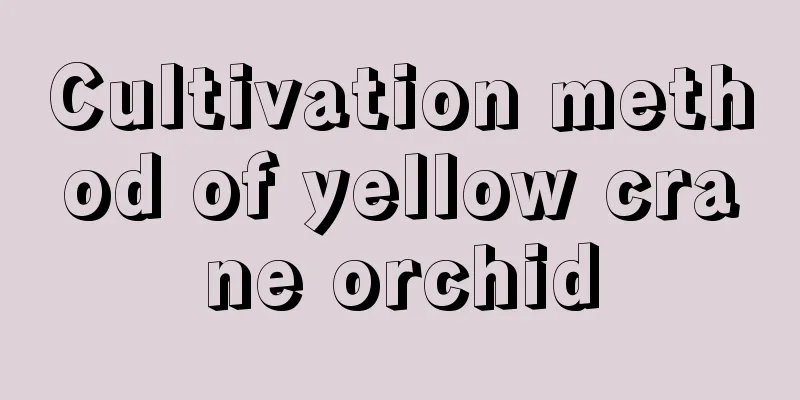Cultivation method of yellow crane orchid

1. Maintenance methods1. Temperature: It is suitable for growing in a warm environment. Although it has a certain degree of cold resistance compared to other plants, its cold resistance is not very high. The winter temperature needs to be kept above six degrees, otherwise frostbite will occur. When the temperature is between 18 and 20 degrees, the plant's growth ability is the strongest. The high temperature in summer can be cooled appropriately to reduce some adverse reactions caused by high temperature. 2. Watering: There are certain requirements for soil humidity, because only moist soil can allow it to grow normally without being affected. Water it frequently during the breeding period, especially in summer, and if the air is too dry, you must also add a certain amount of moisture to the surrounding air. However, after flowering, the plant has a dormant period, during which time you can limit watering, including in winter when the water demand is not high. 3. Light: It does not have high requirements for light. Adequate and warm sunlight is the most suitable. It is enough to provide a bright environment during the breeding period to ensure healthy growth. Strong light needs to be shaded, and it cannot be exposed to direct sunlight in summer. 4. Fertilization: During the growth period, you can apply some decomposed organic fertilizers once every half a month, but be careful not to apply too concentrated fertilizers. You can stop fertilizing in winter. 2. Breeding techniques1. Reproduction: Division is the main method of reproduction. The best time is before the new branches sprout in spring. It can be combined with repotting. Division should be done every two to three years. 2. Pruning: No drastic pruning is required. Just cut off some of the remaining flowers after flowering, mainly to prevent nutrient loss. There is no need to over-prune its branches. 3. Problem diagnosis and treatment1. Disease: Sheath rust will occur. During the breeding period, you should pay more attention to the branches and leaves of the plants. You can spray Zineb powder to control it. 2. Pests: Scale insects may occur, and you can spray dichlorodiphenyltrichloroethane solution to prevent and control them. IV. Other issues1. Toxicity: It is not poisonous and its stems can be used as medicine. 2. Can it be grown at home? Yes, the flowers are relatively elegant and suitable for cultivation. |
<<: How to grow Lespedeza well
>>: How to raise Brazilian beauties
Recommend
How to grow blood orchid
1. Maintenance methods 1. Temperature: Blood leaf...
These "4 kinds" of flowers have fragrance all over their bodies. Putting a pot of them at home will make you feel fresh and comfortable!
1. Daphne odora The flower of Daphne odora is ext...
Hydroponic method of Monstera
Hydroponic Monstera Method Select container For h...
Why doesn't cyclamen bloom?
Cyclamen does not bloom because the temperature i...
What to do if the leaves of Impatiens balsamina wilt
1. Proper watering Reason: Do not water Impatiens...
How to grow orchids on the balcony
Location selection Choosing a balcony in an appro...
Cultivation methods and precautions of ice berry
1. Maintenance methods 1. Soil: When planting ice...
What to do if pine red plum does not bloom
1. No timely pruning or improper pruning If we sh...
What to do if Desert Rose does not bloom
Insufficient tree age The most direct point is th...
Where is the best place to plant Sophora japonica? Where is the best place to plant it at home?
Sophora japonica planting area Sophora japonica i...
Orange tree seedling planting method
Orange is a sweet and juicy fruit and a very popu...
How many days does it take for pepper seeds to germinate?
How long does it take for peppers to germinate? I...
How to grow passion fruit in autumn
1. Sufficient water Because passion fruit itself ...
What are the cultivation methods and precautions of Podocarpus dasyphylla
Podocarpus propagation method Podocarpus, also kn...
How to grow eggplant to achieve high yield?
Eggplant, as an annual herb, has become one of th...









